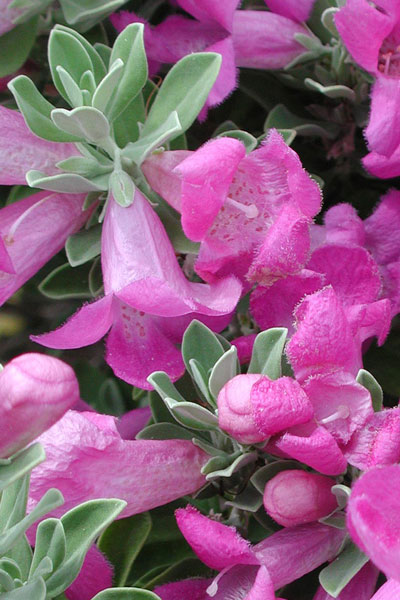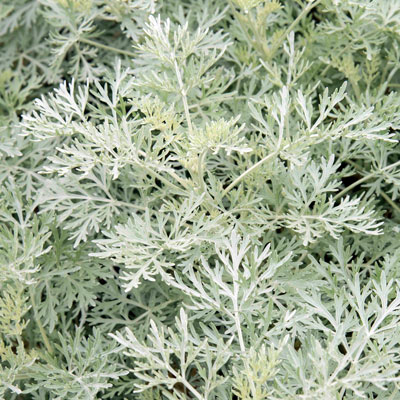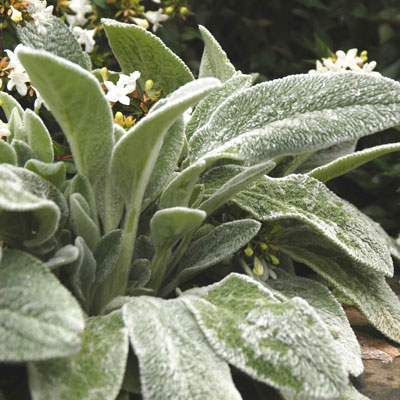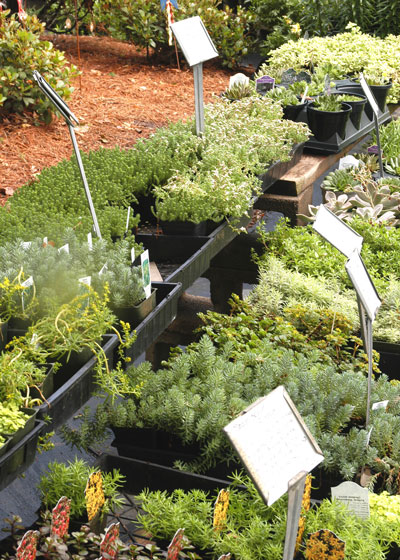When Gray Is Your Game
Gray-leafed plants provide great contrast with other colors in our gardens, and it’s easy to make a strong case for their use. Plant them against bright greens of shrubs and groundcovers, or place them alongside purples of ornamental sweet potatoes, purple fountaingrass and Burgundy Sun coleus. Use them wisely, but do work gray-leafed plants into your garden designs.
Five Great, Gray Garden Plants…
Here are five of my own personal favorite gray plants for Texas landscaping.

• Ceniza, or Texas sage. This is our premier gray-leafed shrub for most of Texas. It’s native south and west of San Antonio, where entire hillsides are covered by the 6- to 7-foot plants. It does grow well for us in North Central Texas, although extreme winters can damage it, as we’ve seen the past couple of years. It does best in full sun and with perfect drainage.
The most noteworthy thing about Texas sage is that it blooms two or three days after late spring and summertime rains. The poor things have been cycling into bloom, then into more blooms these past several weeks, but it’s not until they burst forth in the middle of hot July and hotter August that you realize what great summer performers they are.

• Powis Castle artemesia. When I think of gray-leafed perennials, this one is at the top of my list. There are other beautiful artemesias, to be sure, and almost all of them are shockingly gray. But Powis Castle has staying power that most of the others lack. They may last a couple of seasons, some not even that. But if you prune Powis Castle rather significantly late every winter, it will come back with strong, fresh and beautiful new growth for the entire growing season.
Powis Castle grows best in full sun and rich, but well-draining soils. Its mature height is 16 to 18 inches, and its texture is soft and graceful.

• Lamb’s ear. This is the stuffed animal of the gardening world – you just want to reach out and feel it. Kids recognize its soft texture as soon as they see it, stroking its leaves in their hands and against their faces.
Lambs ear requires good drainage. It grows well in morning sun, but it holds up best if it’s not in intense, baking sun in the summer. The most critical factor in keeping it handsome is to remove its floral spikes as soon as they start to develop. Don’t let the buds open. If you do, the plants will lose their compact, attractive form. Some parts of your plantings may even die out if you let them bloom through their entire flowering cycle.
Lamb’s ear grows to 8 or 10 inches tall, so it’s a great plant for the front of the perennial border.

• Russian sage. How many plants do you know with “sage” in their names? This one is not used in cooking and it’s not at all related to ceniza, autumn sage or most of the others. Russian sage grows to 18 inches tall while it’s blooming. It does best in full or nearly full sun. Place it where you can also enjoy its lovely lavender-blue flowers late every spring. Bees love this plant!

• Sedums. We’re seeing many new selections of sedums coming into our Texas marketplace, and they’re fine landscaping additions. Some are green, while others are gray. All are xeriphytic, meaning that they’ll endure the dry weather ahead. Ask your nurseryman to suggest the best type for your needs. Odds are that you’ll find one that’s the perfect match.
